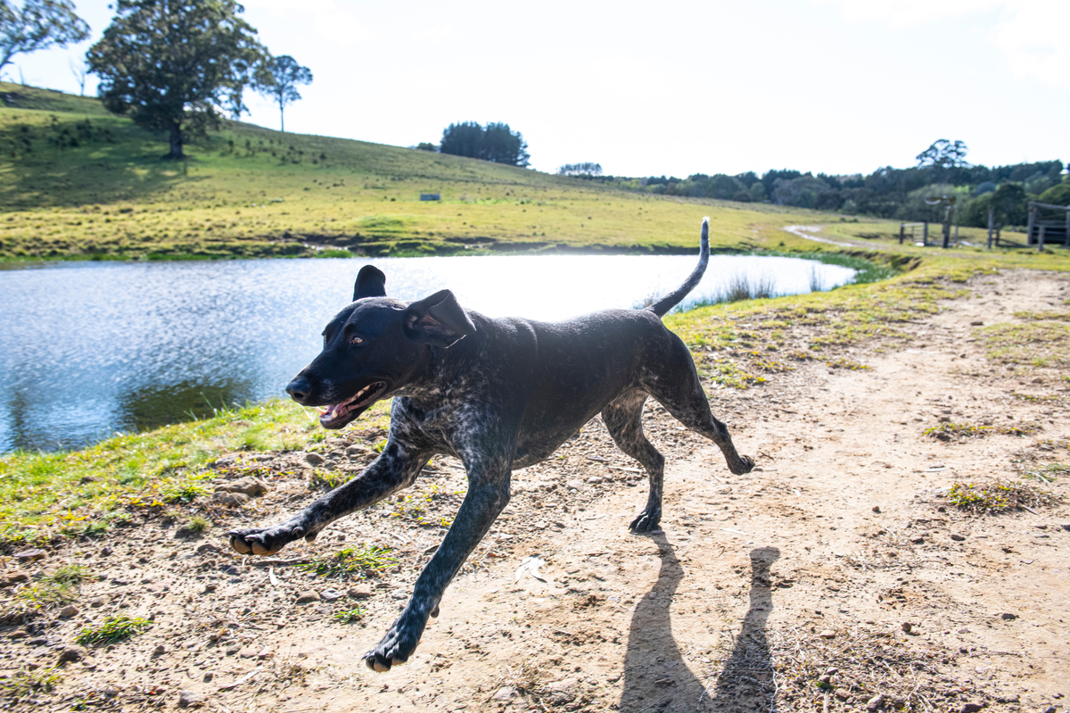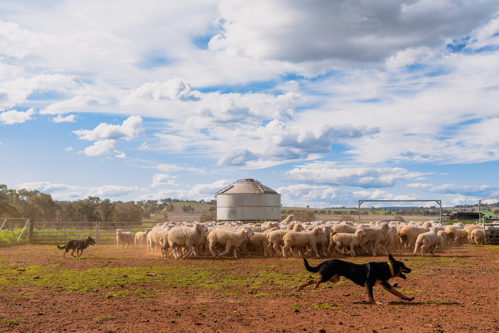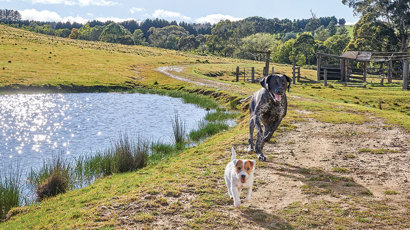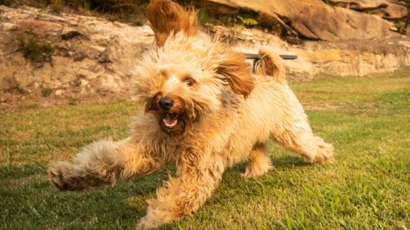When Do Joint & Muscles Need Extra Support?

Movement is part of a dog’s every day life. Spending time walking, running, leaping, jumping, pawing, playing, bowing, scratching, greeting and digging is what life is all about, and a great marker of health and wellbeing. Just as it is with us humans, it’s only when we have a fall or sprain or injury which affects our joints and muscles do we truly appreciate our ‘musculo-skeletal systems’ (combined muscles, bones and joints altogether) which are central to a good quality of life.
In this article we’ll discuss some of the scenarios when we should ‘think joints and muscles’ and give some tips (nutritional and otherwise) which can help your dog along in their active, healthy lives.
ACTIVITY, EXERTION, ATHLETICISM AND ‘WORKING’ DOGS

There are so many levels of exercise within the canine world. Even lap-dogs can be highly active in jumping 3-4 times their body height, vs working sled dogs who can run for 4-6 hours a day, towing a weight behind them.
When thinking about your dog’s joint and muscle needs, consider the type or intensity of activity they’re undertaking, the duration over which they’re exerting themselves and how ‘normal’ this is for their size and breed.
Asking a Kelpie to leap over the back of a 300-head flock of sheep is appropriate, if you’re supporting that kind of activity through nutrition - in other words, the right type of dog food. Expecting the same of a Toy Poodle just isn’t going to work.
WEIGHT DISTRIBUTION
When a dog moves a great deal, they’re putting greater reliance on their joints and muscles. The way they move, the angles in which joints twist and turn and the resulting weight that each joint takes is complex, sometimes unpredictable and down to that dog’s biomechanics. One thing that we can be certain of is that if the body moves in a way it’s not ‘designed’ to, and when a joint is asked to do something that it’s not meant to do, things can go wrong.
The most common example of this is when dogs are carrying more weight than they should. Seeing as up to 50% of our pets are carrying excess weight, there is a very high chance that your dog’s joints are being challenged in a way that isn’t naturally intended in their anatomical plan. Keeping them lean is critically important to joint (and muscle) health.
BEING ‘HEAVY SET’
Each individual has a unique body make-up. Most of our mass is muscle, plus organs, plus some connective tissue (including tendons and ligaments) and fat (known as ‘adipose tissue’) in between, plus some bones and joints, of course.
The proportion of each of these tissue types is largely determined by genetics (think breeds of dog) and altered a little by use and training when it comes to muscle and excess calories when it comes to adipose tissue. The confirmation of a dog’s skeletal frame also dictates how much muscle vs other tissues they can carry, and a dog’s energy requirements are largely dictated by muscle mass too.
The point here is that the ‘heavy set’ or muscular dog has different nutritional needs to the slighter ones, and we should respect this during mealtimes.
AGE, REPEAT USE & TRAUMA
Joints and muscles are continually working. Whether it be the ones involved in taking a breath, or those that help them rise in the morning, this musculo-skeletal system is essential to life, and getting up and out and about becomes a clear marker of quality of life as our dogs get older.
The more we use our bones and joints, the more they are subjected to micro-changes and remodeling. They respond to repeat use, any injuries our dogs sustain along the way and respond to whatever the world has to throw at them. Its no surprise that mobility issues are more common in older pets, and when assessing joint and muscle needs, we should also keep in mind how debilitating simply ‘not being able to get up’ can be in a dog that not only loves to interact with others and their environment, but needs to rise to take themselves to the toilet and to mealtimes.
With the above concepts in mind, here are a few questions to help us re-focus on your dog:
- Are they big runners and jumpers? Do they love their ‘zoomies’?
- Have you seen their body twist and turn in weird and wonderful ways? Would you describe your dog as ‘clumsy’ or do they throw themselves about a lot?
- Are they a little on the heavier side? This can mean ‘unhealthy heavy’ in carrying too much weight, but can also mean ‘heavy set’, meaning they’re healthy, but more muscular than their average counterparts?
- Do they take some time to warm up in the morning? Have you noticed changes in the way they move and interact with the world which suggest that their joints and muscles aren’t what they used to be?
If your answers to any of these questions make you think twice about your dog’s ability to throw themselves nose-first into the world every morning, then it’s time for you to take a pro-active approach to joint and muscle heath. If you’re seeing signs of ill health or a dip in their well-being, then contact your vet as soon as you can for advice and follow up.
In all other circumstances and where the musculoskeletal system is your priority, then Healthy Benefits Joints & Muscles is the diet for your dog. But there's no reason to ignore other options, like our range of chicken jerky for dogs and grain free dog food.



